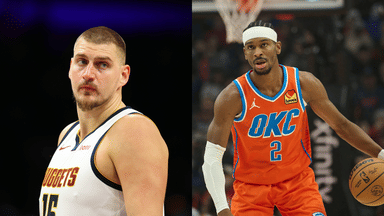While the Mavericks faithful were heartbroken by the Luka Doncic trade, NBA analysts were generally positive about the impact he can have in Los Angeles, one of the league’s biggest markets.
Advertisement
Despite a primetime tip-off, Doncic’s debut on Monday night drew in as many as 2.55 million viewers. The game had an average viewership of 2.01 million viewers. That was a 42% rise over the NBA’s average viewership last season. It was ESPN’s most viewed game since November even though nearly 48% of the league’s audience were in bed when it aired.
Interestingly though, the highly-anticipated debut still paled in comparison to one of the most-viewed WNBA games from last season. On August 18th, 2024, the matchup between Caitlin Clark’s Indiana Fever and Nneka Ogwumike’s Seattle Storm drew an average of 2.2 million viewers on ABC, peaking at 2.9 million.
The game tipped off at 3:30 pm ET on a Sunday, far from the primetime slot, and still drew more eyes than Doncic’s debut with the Purple and Gold, a Caitlin Clark fan account pointed out online.
a random caitlin clark game in august had more viewers than luka dončić’s debut in a lakers jersey 👀 pic.twitter.com/pZNmhKP2Y5
— cc akgae (@clrkszn) February 13, 2025
To be fair, the 14th-seeded Jazz were never expected to threaten the Lakers on their home turf, taking away some of the stakes from their matchup. However, the comparison inadvertently drums up the conversation about the NBA’s declining ratings.
Through the first 18 games of the season, viewership was down 28% compared to last year. It’s a particularly painful blow considering the new media deal signed by the league last summer. With their 11-year $76 billion deal, the NBA is averaging a cost of $12.12 per viewer.
Conversely, the NFL signed a landmark 11-year, $110 billion deal in 2021, and Guggenheim reports that their average cost per viewer is $4.04 — one-third of what the NBA is costing its media partners.
The networks that paid top-dollar for the rights to NBA games aren’t sweating the numbers just yet. After all, fluctuations are inevitable for a league approaching its 80th season. But that doesn’t make it any less surprising that Doncic’s debut attracted fewer eyes than a mid-season contest featuring Caitlin Clark.
This shouldn’t spell trouble for the NBA. Instead, it’s an opportunity to celebrate the growing women’s league. Entering its 29th season, the WNBA is the longest-running women’s professional sports league, and if the NBA’s history is any indicator of the future, the WNBA could be in a prime position for long-term growth.
Between its 25th and 50th seasons, the men’s league saw its revenue increase by a whopping 1200%. A lot of this growth is attributed to the merger of the ABA and the NBA, and while the WNBA has no counterpart to expand with, it is currently neglecting several large markets in North America.
In fact, when the first WNBA game was played in Toronto, Canada in 2023, it sold out the Scotiabank Arena. Leading sports cities like Boston, Detroit, Houston, and Miami are also without a women’s basketball team.
Since its last expansion in 2008, the WNBA has grown exponentially and with their next CBA set to be negotiated this year, the biggest change the WNBA can make to accommodate further growth is tying the salary cap to the league’s revenue.
While NBA athletes earn 50% of the league’s basketball-related income, WNBA players earn only 10% of their league’s revenue. Rectifying this will certainly help the league attract and retain top talent, allowing them to expand into the plethora of untapped markets.








